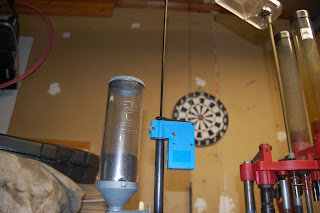DH is extremely knowledgeable & I (we) have counted on his expertise to build this area of our (& our team's) preps. It's not something you pick up overnight, he has been doing this for years. But, I am learning there are lots of people out there, like me, that are "newbies" in a lot of the areas of being prepared for all sorts of emergency situations, up to and including when the stuff hits the fan. I also know that there are people out there that are doing this on their own. Plus, I recognize that there may be a time when DH is not around to take care of this for me. So, this week I am continuing my newbie journey & adding "reloading to my list of newbie activities. This weekend I started the journey as a REALLY newbie reloader. Ready to follow?
I believe that everyone needs to have the references and supplies to do this for them self. As with anything, it takes time & practice to learn a new skill. Again, if you wait until a time of emergency, you won't have the skill OR the supplies.
First, you need books to help you learn, then is a ton of information like charts that help you determine what type of powder, how much powder to use for a specific bullet weight and velocity.
Our Dillon 550 Progressive PressAdded primers...we ran out during practice.
Step 1. put in a shell (brass) into the slot. When I pulled down the handle it deprimed, sized & primed. Then you advance the rotating thingie (rotating shell plate) by hand..
2. The next step adds powder when you pull the handle down. Then you advance the rotating shell plate by hand.
3. Add a bullet on top of the brass casing,
4. Pull the handle and it pushes the bullet in and crimps the bullet in place.
See, it's a reloaded bullet. Then you advance the rotating shell plate by hand. Which will eject the newly reloaded bullet out & into collection bin.
Check to insure the primer is there.
That's it for the.38 specials.
This with all stations loaded.
Ta! Da!
This is just the beginning of the journey...




















No comments:
Post a Comment